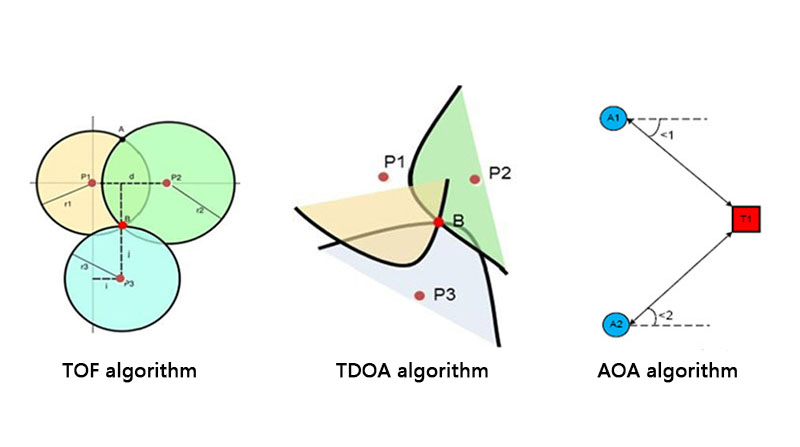UWB positioning technology algorithms mainly include TOF, TDOA, AOA, and each has its own characteristics. Imyfit adopts TDOA (time difference of arrival) algorithm, which has relatively low requirements for the network and high positioning accuracy, and has become a research hotspot.

1. TOF algorithm (time of flight)
The distance between the tag and the base station is measured by multiple sending and receiving pulses. TOF location is based on ranging. The tag and each base station that needs to be located initiate ranging, and the location is calculated after ranging.
Advantages: simple algorithm and high precision
Disadvantages: power consumption of tags (short standby time of tags, typical application is 3 days), small system capacity (small number of tags in a single area, typical < 100)
2. TDOA (time difference of arrival)
By correlating the signals received by one UWB base station with those received by the other two UWB base stations, the TDOA value can be obtained, and then the location calculation can obtain a higher accuracy position.
Advantages: UWB label power saving (most products label standby time 6 months), large system capacity (single area > 1000)
Disadvantages: the development is difficult (high precision time synchronization between base stations is required, cross group positioning algorithm is complex), and the accuracy outside the envelope of base station is low (the accuracy outside the area surrounded by base station is not as high as TOF)
3. AOA (angle of arrival)
Some hardware devices sense the direction of arrival of the signal from the transmitting node, calculate the relative azimuth or angle between the receiving node and the anchor node, and then use triangulation or other methods to calculate the position of the unknown node.
Advantages: less base stations are required
Disadvantages: it is difficult to measure the angle accurately, and it is sensitive to signal occlusion, so this algorithm has less practical application
The selection of location method involves many factors, so comprehensive judgment is needed in the system to better meet the use of the system. It is very difficult to use TDOA technology to complete large area multi base station positioning system, and many algorithms need to be iterated from the project practice. Most manufacturers in the market adopt TOF positioning (small capacity, high power consumption) technology, while our health adopts TDOA algorithm (large capacity, low power consumption) for personnel and materials positioning, which can meet the needs of accurate positioning in the scene of justice, sports training, power grid, tunnel operation, etc.
If you have any questions, please contact us by the following ways